What is an LED Strip Light?
LED strip lights are new and versatile forms of lighting. There are many variants and exceptions, but for the most part, they have the following characteristics:
● Consist of many individual LED emitters mounted on a narrow, flexible circuit board
● Operate on low-voltage DC power
● Are available in a wide range of fixed and variable color and brightness
● Ship in a long reel (typically 16 feet / 5 meters), can be cut to length, and includes double-sided adhesive for mounting
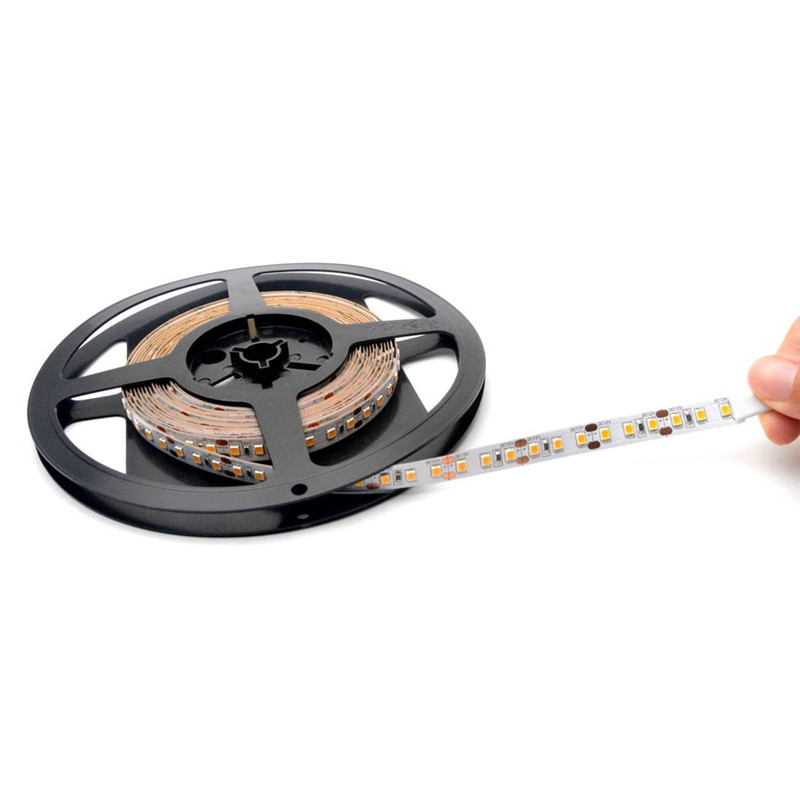
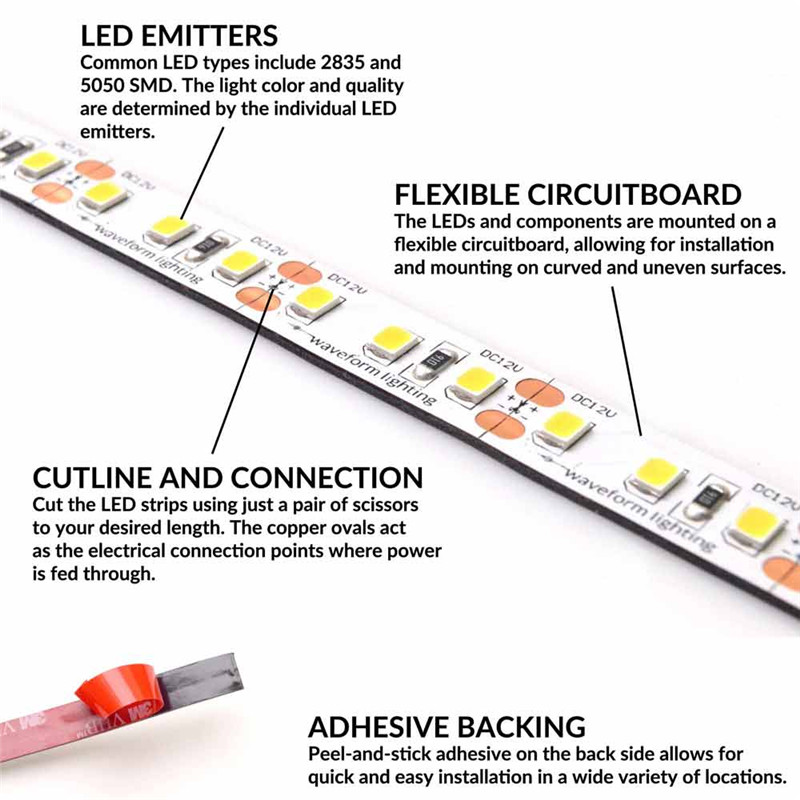
Anatomy of an LED strip
An LED strip light is typically half an inch (10-12 mm) in width, and up to 16 feet (5 meters) or more in length. They can be cut to specific lengths using just a pair of scissors along the cutlines, located every 1-2 inches.
Individual LEDs are mounted along the strip, typically at densities of 18-36 LEDs per foot (60-120 per meter). The light color and quality of the individual LEDs determine the overall light color and quality of the LED strip.
The backside of the LED strip includes pre-applied double-sided adhesive. Simply peel off the liner, and mount the LED strip to virtually any surface. Because the circuitboard is designed to be flexible, LED strips can be mounted on curved and uneven surfaces.
Determining LED Strip Brightness
Brightness of LED strips is determined using the metric lumens. Unlike incandescent bulbs, different LED strips can have different levels of efficiency, so a wattage rating is not always meaningful in determining actual light output.
LED strip brightness is typically described in lumens per foot (or meter). A good quality LED strip should provide at least 450 lumens per foot (1500 lumens per meter), which provides approximately the same amount of light output per foot as a traditional T8 fluorescent lamp. (E.g. 4-ft T8 fluorescent = 4-ft of LED strip = 1800 lumens).
LED strip brightness is primarily determined by three factors:
● Light output and efficiency per LED emitter
● The number of LEDs per foot
● The power draw of the LED strip per foot
An LED strip light without a brightness specification in lumens is a red flag. You will also want to watch out for low cost LED strips that claim high brightness, as they may overdrive the LEDs to the point of premature failure.
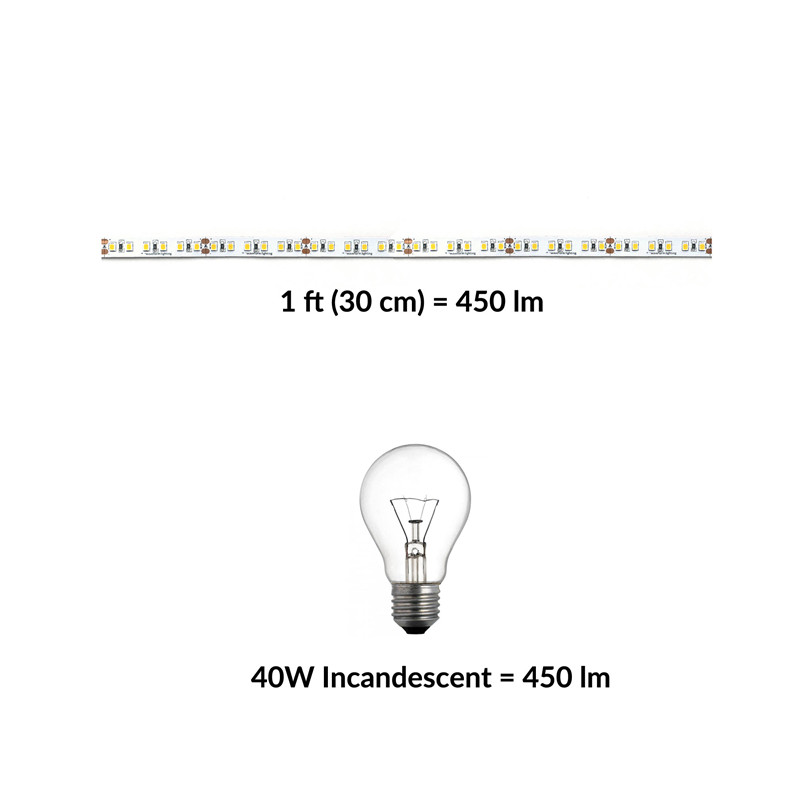
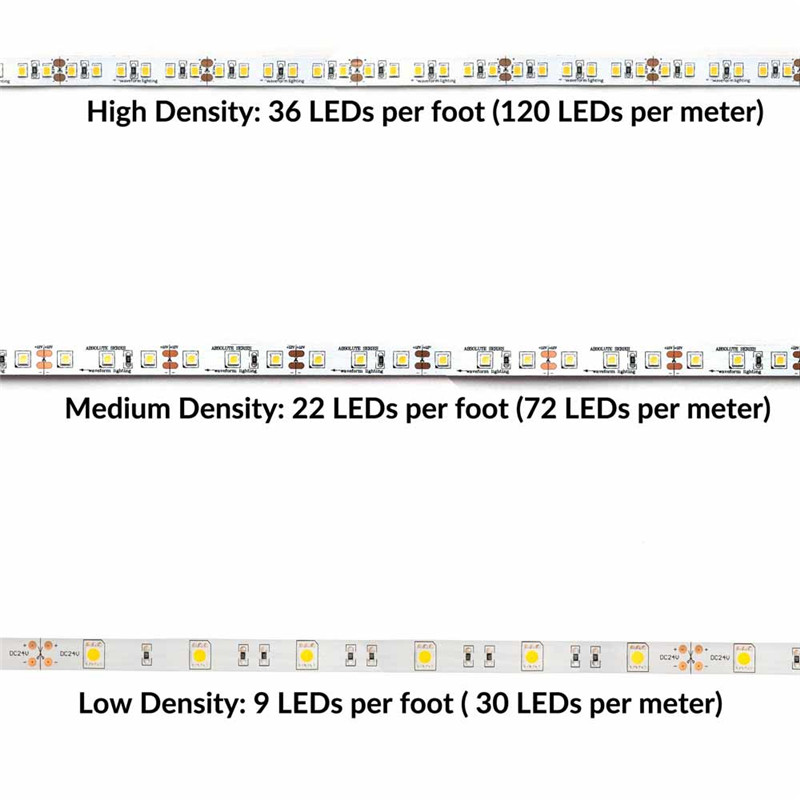
LED Density & Power Draw
You may come across various LED emitter names such as 2835, 3528, 5050 or 5730. Do not worry too much about this, as what is most important in an LED strip is the number of LEDs per foot, and the power draw per foot.
LED density is important in determining the distance between LEDs (pitch) and whether or not there will be visible hotspots and dark spots between the LED emitters. A higher density of 36 LEDs per foot (120 LEDs per meter) will typically provide the best, most evenly distributed lighting effect. LED emitters are the most expensive component of LED strip manufacturing, so be sure to account for LED density differences when comparing LED strip prices.
Next, consider an LED strip light's power draw per foot. The power draw tells us the amount of power the system will consume, so this is important to determine your electricity costs and power supply requirements (see below). A good quality LED strip should be capable of providing 4 watts per foot or more (15 W/meter).
Finally, do a quick check to determine if the individual LEDs are being overdriven by dividing the wattage per foot by the LED density per foot. For an LED strip product, it is usually a good sign if the LEDs are not driven at more than 0.2 watts each.
LED Strip Color Options: White
LED strip lights are available in various shades of whites or colors. Generally, white light is the most useful and popular option for indoor lighting applications.
In describing the different shades and qualities of white, color temperature (CCT) and color rendering index (CRI) are two metrics that are important to keep in mind.
Color temperature is a measure of how "warm" or "cool" the light's color appears. The soft glow of a traditional incandescent bulb has a low color temperature (2700K), while the crisp, bright white of natural daylight has a high color temperature (6500K).
Color rendering is a measure of how accurate colors appear under the light source. Under a low CRI LED strip, colors might appear distorted, washed out, or indistinguishable. High CRI LED products offer light that allows objects to appear the way they would under an ideal light source such as a halogen lamp, or natural daylight. Also look for a light source's R9 value, which provides further information about how red colors are rendered.
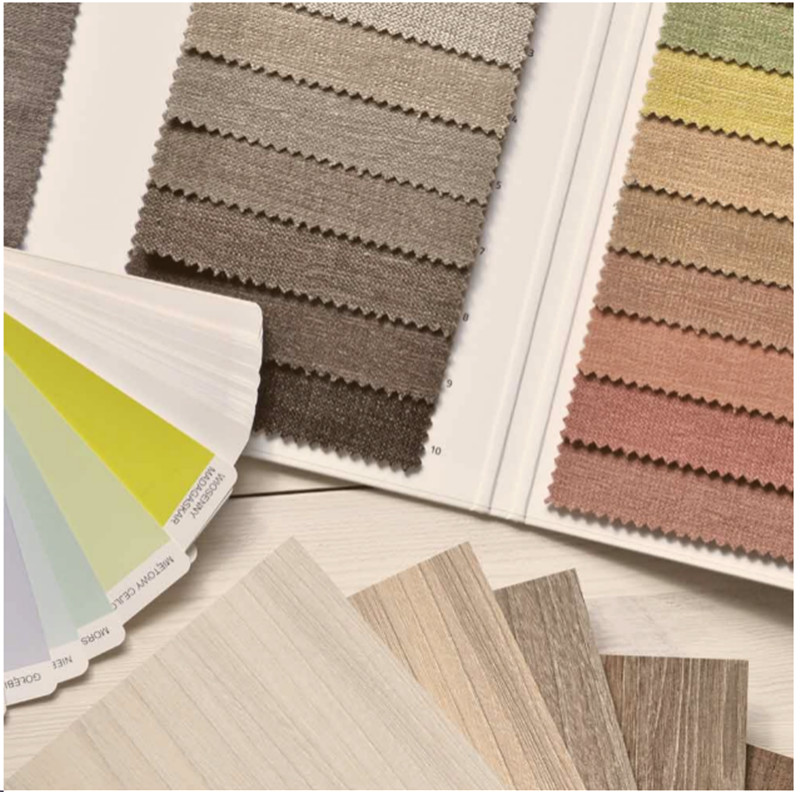
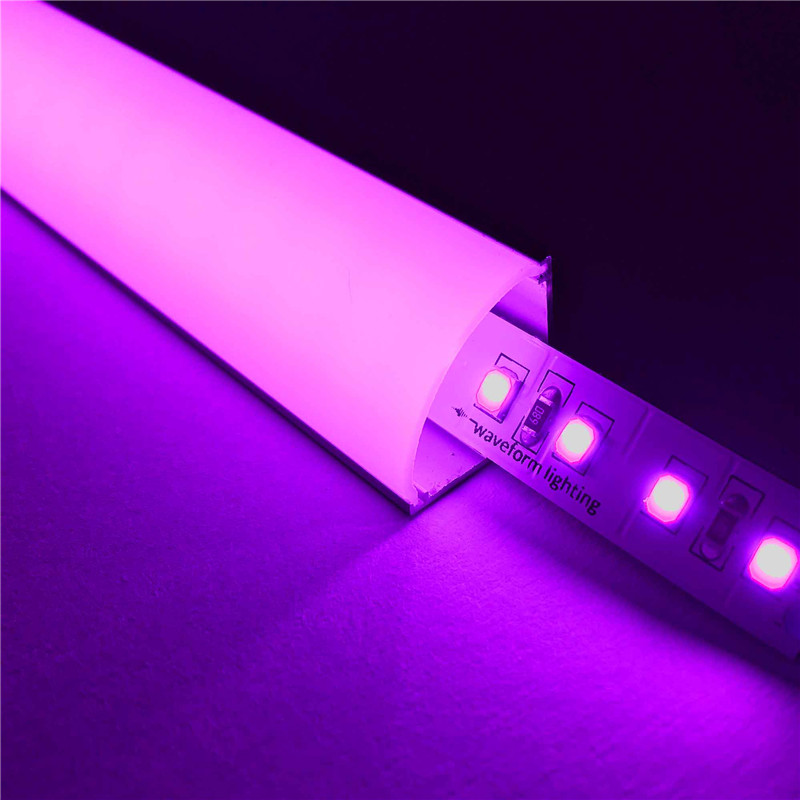
LED Strip Color Options: Fixed and Variable Color
Sometimes, you might need a punchy, saturated color effect. For these situations, colored LED strips can offer great accent and theatrical lighting effects. Colors across the entire visible spectrum are available - violet, blue, green, amber, red - and even ultraviolet or infrared.
There are two primary types of colored LED strip: fixed single color, and color changing. A fixed color LED strip emits just one color, and the operating principle is just like the white LED strips we discussed above. A color-changing LED strip consists of multiple color channels on a single LED strip. The most basic type will include red, green and blue channels (RGB), allowing you to dynamically mix the various color components on the fly to achieve virtually any color.
Some will allow for dynamic control of white color temperature tuning or even both color temperature and RGB hues.
Input Voltage & Power Supply
Most LED strips are configured to operate at 12V or 24V DC. When running off of a standard mains supply power source (e.g. household wall outlet) at 120/240V AC, the power needs to be converted to the appropriate low voltage DC signal. This is most frequently and simply accomplished using a DC power supply.
Make sure that your power supply has enough power capacity to power the LED strips. Every DC power supply will list its maximum rated current (in Amps) or power (in Watts). Determine the total power draw of the LED strip using the following formula:
● Power = LED power (per ft) x LED strip length (in ft)
Example scenario connecting 5 ft of LED strip where LED strip power consumption is 4 Watts per foot:
● Power = 4 Watts per ft x 5 ft = 20 Watts
The power draw per foot (or meter) is almost always listed in an LED strip's datasheet.
Not sure if you should choose between 12V and 24V? All else equal, 24V is typically your best bet.
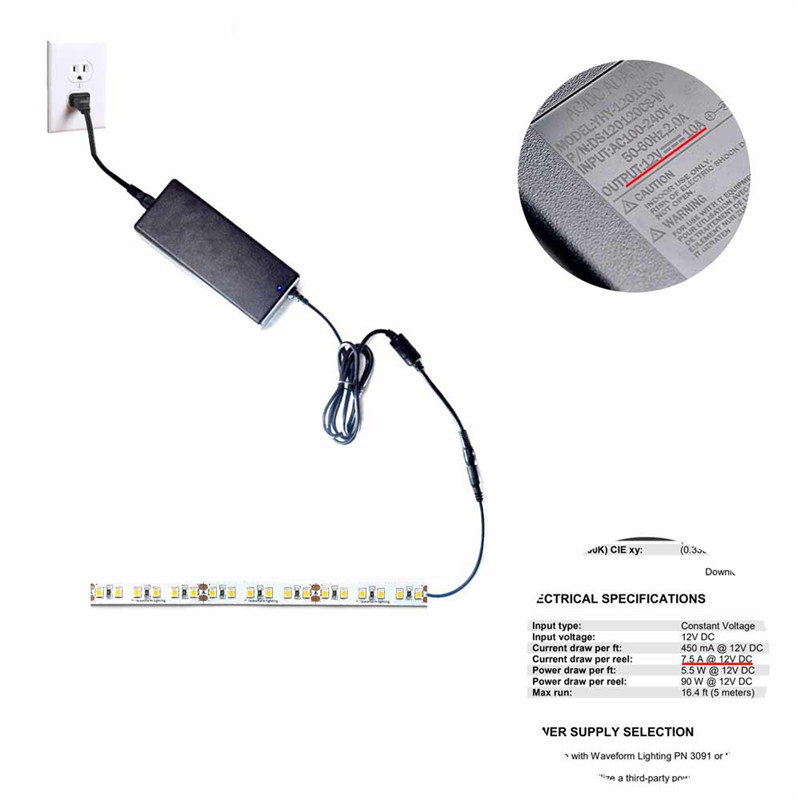
Post time: Sep-26-2023







